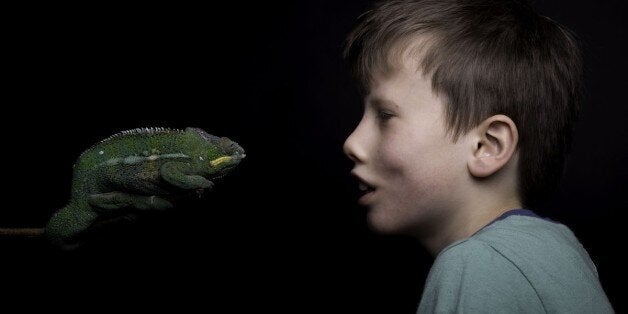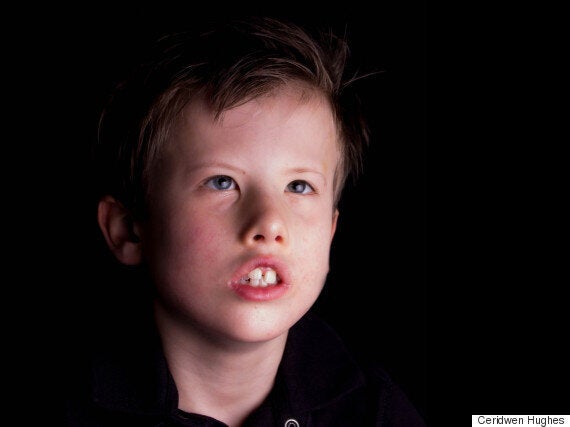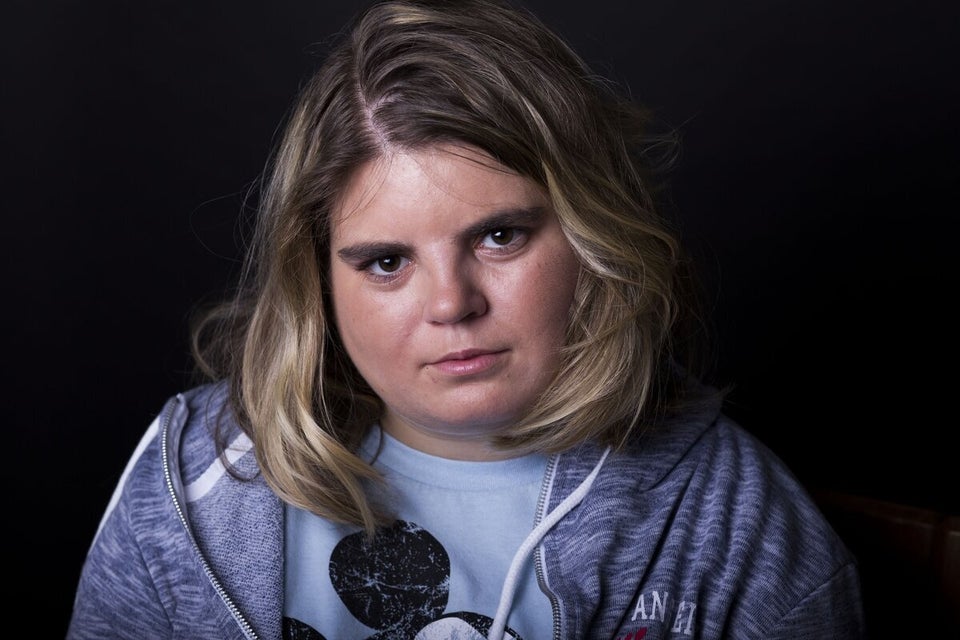
When you look at this child what do you see? That's the question photographer Ceridwen Hughes is posing with 'The Rare Project'.
Hughes is sharing her project to mark the ninth international Rare Disease Day on Monday 29 February.
It is her hope that as well as raising awareness about rare diseases and their impact on children's lives, the project will also serve as a reminder that people with rare diseases are not defined by the diagnosis.
'The Rare Project' includes a shots of Hughes own son Isaac, who has Moebius Syndrome, a neurological disorder that causes facial paralysis.
"People often make judgments based on what they expect him to be able to do and sometimes they do not take the time to get to know the real child," she said.
"Isaac is funny, determined, bright and really caring. Those who do not see beyond his condition are poorer for it."

Ceridwen Hughes was inspired to create 'The Rare Project' by her son Isaac
Isaac was diagnosed with Moebius Syndrome when he was eight months old and at that time Hughes said she was told nothing more than the name of his condition. She received no further information or support and she felt very isolated.
Hughes set up the not-for-profit organisation Same But Different to raise awareness of disability and counteract prejudice through art ventures such as 'The Rare Project'.
Every photo in 'The Rare Project' features a child with a rare condition and is accompanied by background information from their family, so the audience can learn not just about the condition, but about the person it is affecting too.
"I want to try to break down some of the barriers that exist for those with disabilities and rare diseases in particular," Hughes explained.
"Often the person taking part in the project has never had a portrait taken before because they may be nervous or have challenging behavior.
"It does not matter what condition each person has, they are ultimately still people with their own likes and dislikes and they deserve to have a voice."
SEE ALSO:
Empowering Photo Project Transforms Stereotypes Of Women With Disabilities
Kawasaki Disease: Mum Wants To Raise Awareness Of Heart Condition After Son's Unexpected Diagnosis
Hughes' hope is that the project will encourage people take the time to stop and think about how they perceive those with disabilities or rare diseases.
Some of the parents of the children involved in the project have also spoken out about why they felt it was important to be involved.
The parents of a girl called Nina - who has an abnormality in her Adam 17 gene and is thought to be the only known registered case in the medical literature - explained:
"It is important to reach as many people as possible regarding rare conditions, so that it no longer becomes a taboo subject, but something that is embraced, explored and understood by the public, leading to greater acceptance of the need to accommodate those who have rare conditions, with empathy, humanity and more resources to cover their special needs."
The parents of a boy called Alex, who has an inherited metabolic disorder called Glutaric Aciduria Type 1, added: "We wanted to take part in 'The Rare Project' because raising awareness and understanding of rare diseases is so important for us because like every family in the land, all we want is the best for our children.
"We want our son to be happy, to have friends and to have opportunities to fulfil his potential as much as he possibly can. This will only happen once more people are better informed about rare diseases and can be more understanding about those who are different from the 'norm'."
